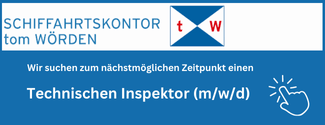The successor to the 48/60CR engine continues features, such as a common-rail system with Ecomap capability, and adds new technologies, such as two-stage turbocharging
MAN Diesel & Turbo states that the 45/60CR’s power increase and low consumption are particularly aimed at such key, lifecycle[ds_preview]-cost-oriented applications as cruise liners, RoPax ferries, RoRo vessels, and dredgers. The company is making the 45/60CR engine available first as 12 V and 14 V versions with 6 L to 10 L variants to follow later. The engine has been conceived from the beginning as a family concept that will accommodate future derivatives (e.g. dual-fuel).
Gunnar Stiesch, Head of Engineering Engines at MAN Diesel & Turbo, says: »Next to a frontloading approach, using thermodynamic engine process calculations, we used computational fluid dynamics to simulate and optimize the combustion process. Also, finite elements analysis was used to optimize the engine’s mechanical strength and vibration behavior. We then put the power unit to the test on the world’s largest, four-stroke, single-cylinder test engine and started the experimental optimization and validation phase.«
The two-stage turbocharger module rounds off the 45/60CR’s profile. »Despite the turbocharging being two-stage, load pick-up behaviour is the same as for the single-stage turbocharged 48/60CR engine. Operators thus profit from maximized peak pressure and optimal utilization of the Miller Cycle«, explains Stiesch.
The V45/60CR enables owners and operators to meet demands of more stringent emissions regulations, while simultaneously optimizing operating expenses with low levels of fuel-consumption. Through increasing standardization and using modular sub-components, it also allows faster installation and easier maintenance, MAN says. The new four-stroke unit meets IMO Tier II, while IMO Tier III is met with MAN’s in-house, compact SCR system; it is shortly scheduled for approval by all major classification societies.
According to MAN the 45/60CR is suitable for use in a wide range of marine applications, especially applications with high power-demands like modern cruise vessels, large RoPax and RoRo ferries, as well as mega-dredgers. Calculations, based on a representative load-profile of a cruise vessel, show that a ship operating with an 45/60CR engine can enjoy a fuel-oil cost benefit of 5 to 12% in comparison with a vessel powered by an equivalent engine from other manufacturers. For a cruise vessel of around 120,000-150,000 gt with 60-65 MW of installed power and an assumed fuel price of 500 €/t, this translates into annual savings of 0.9 to 2.4mill. € when employing the 45/60CR.
The engine combines the characteristics of its predecessor (48/60CR) – including its in-house common-rail injection system, with the latest innovations in diesel-engine technology such as two-stage turbocharging. The V45/60CR can also be combined with the ECOMAP 2.0 technology that grants operators the flexibility to run an engine following different SFOC power characteristics, facilitating optimal efficiency at different load points. The latest development is the integration of the SCR system into ECOMAP, offering even further possibilities to optimize the efficiency of the propulsion system, taking into account fuel and urea prices.
The 45/60CR will initially be available as 12 V and 14 V versions with power outputs of 15,600 and 18,200 kW respectively, with inline versions following at a later stage. The first set of V-type engines will be available from end-2020 with delivery of the first L-type engines due from 2022.















